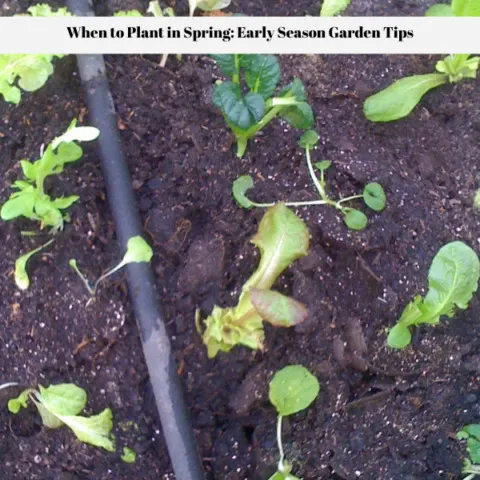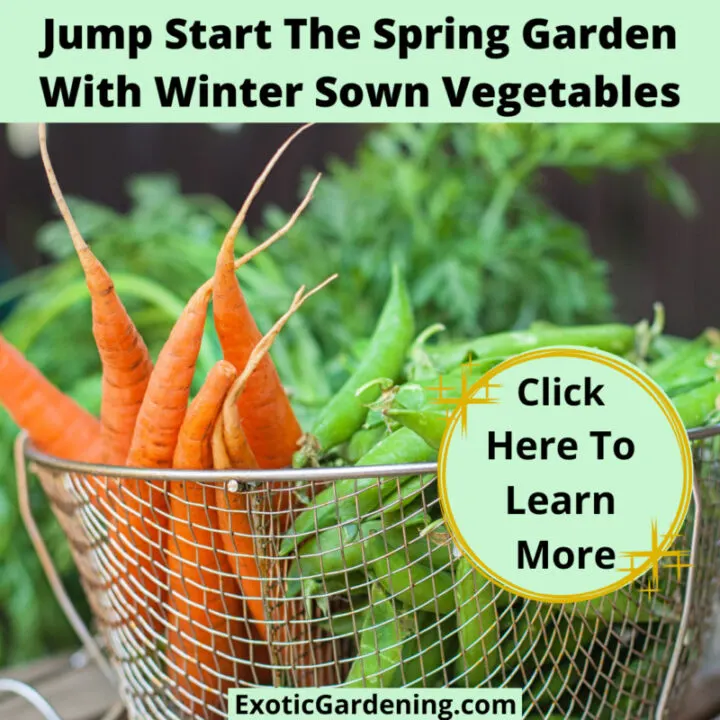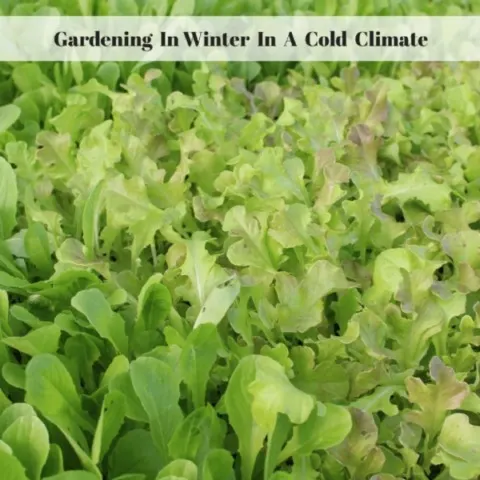When autumn arrives in Indiana, my garden gets a special treat: the breathtaking Monkshood (Aconitum) flowers start to bloom.
These deep blue beauties grace my garden typically in October, but they've surprised me by appearing as early as September or lingering into November.
Monkshood is one of my favorite flowers for fall and a fascinating plant, but it comes with a caveat – it's toxic.
In this extended blog post, we'll explore the allure of Monkshood in fall gardens while delving into its unique characteristics and care requirements.
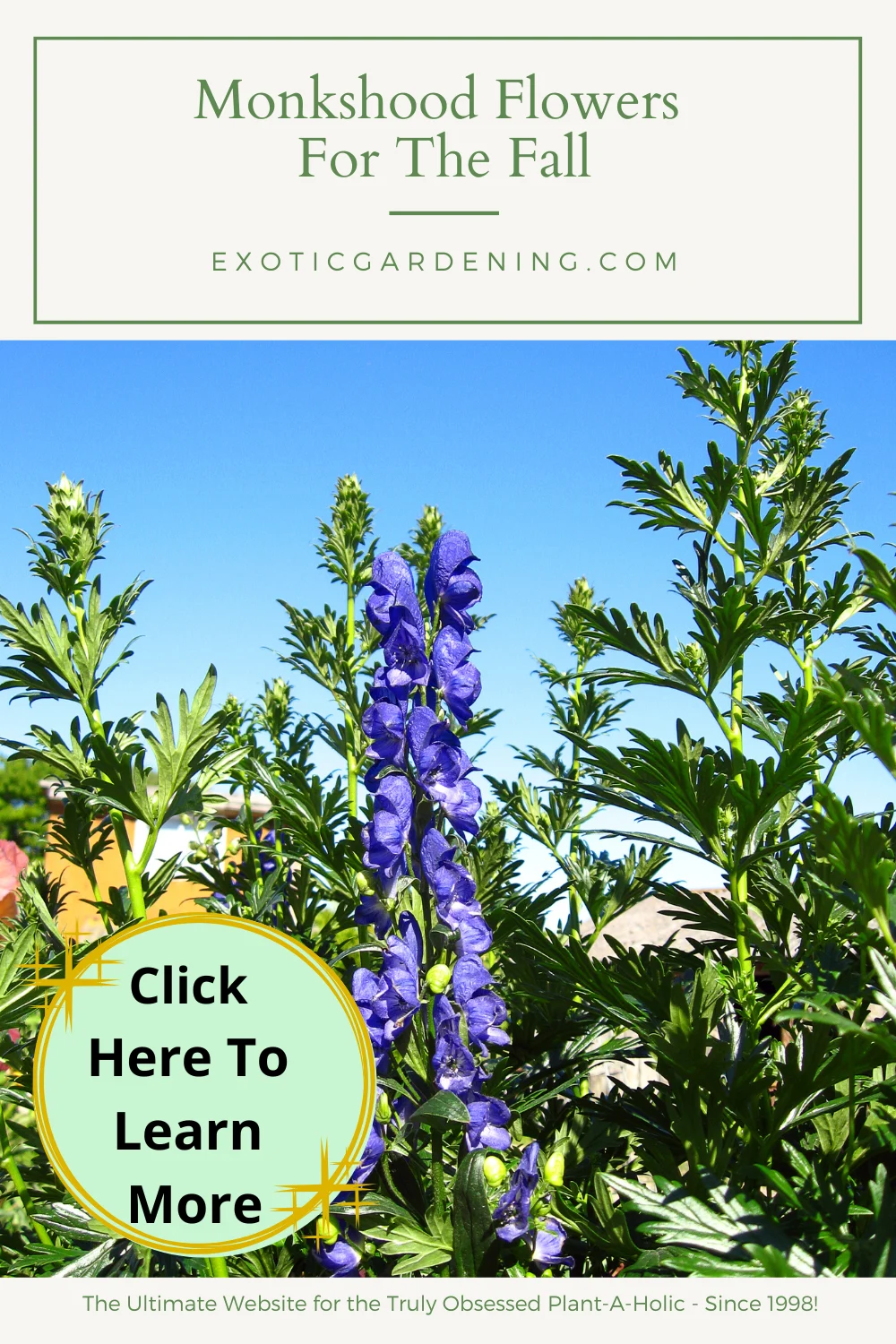
When Does Monkshood Bloom in the Fall?
For those curious about its blooming schedule, Monkshood typically graces us with its presence in October here in Indiana.
But the wonder of nature often surprises us.
I've been delighted to see it bloom as early as September, and it has even pushed the boundaries into November.
This unique flowering time is one of the reasons I cherish this plant in my garden.
It's like a farewell gift from summer and a welcoming embrace from autumn.
How to Grow Monkshood: A Delicate Challenge
Growing Monkshood from seed can be a bit of a challenge.
I've attempted it, and while the seeds sprout, they often struggle to make it past the first couple of weeks.
One possible explanation is that, as summer progresses, it becomes increasingly challenging to find the time to care for these delicate seedlings in my greenhouse.
Some plants thrive with minimal attention, but Monkshood can be a bit finicky.
It's worth noting that the Monkshood plants I currently have in my garden came from a plant sale, and they've multiplied gracefully.
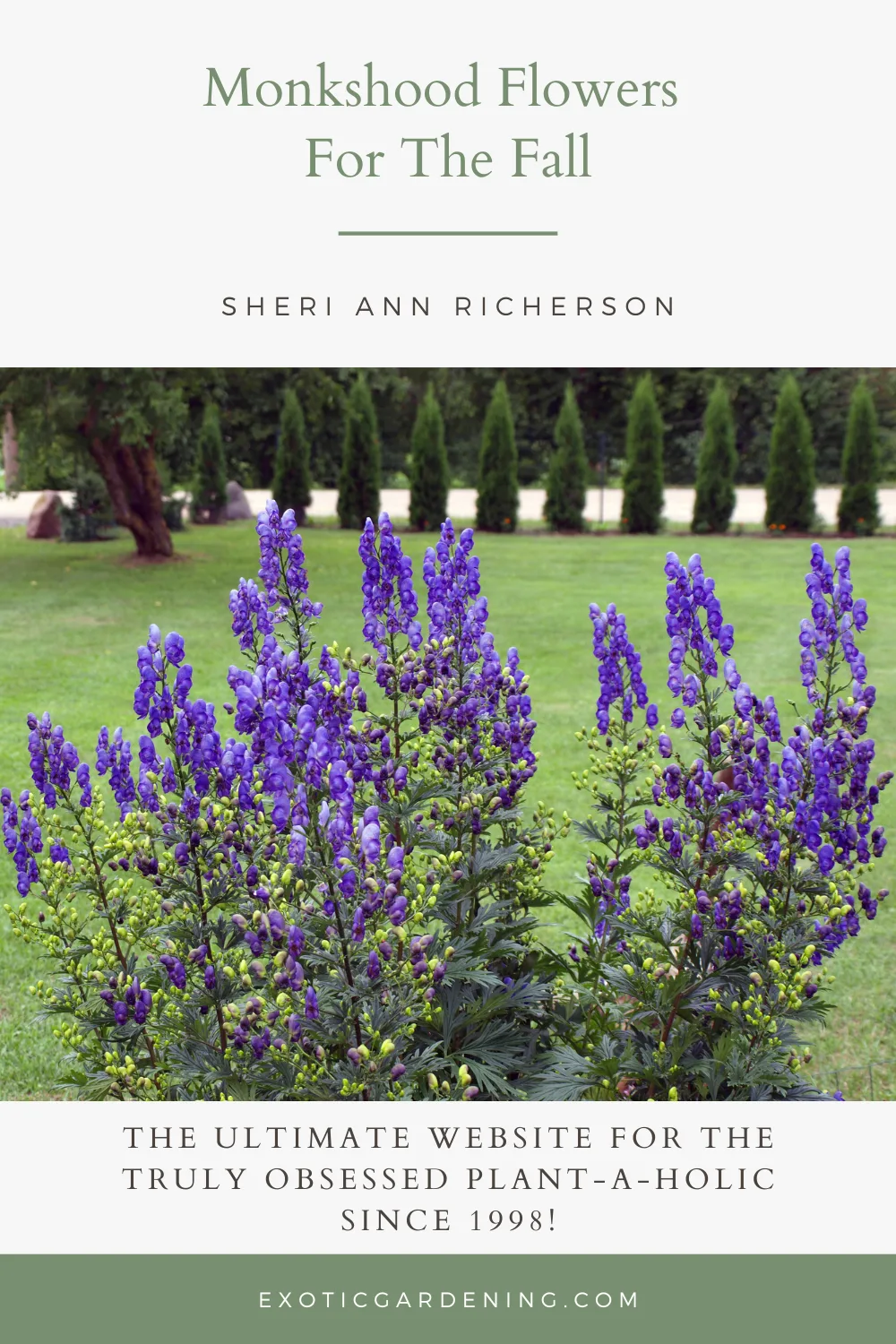
Monkshood Care: Tending to a Toxic Beauty
Caring for Monkshood requires a delicate touch.
As I mentioned earlier, precautions are essential when dealing with this toxic beauty.
Wearing gloves is a must, and planting it away from paths and walkways in your garden is a safety measure you should take seriously.
While Monkshood can present some challenges, it's undoubtedly a spectacular addition to any garden.
With proper care, it can thrive and continue to enchant you with its beauty.
Planting Locations and Ideal Growing Conditions
Choosing the right planting location and providing the ideal growing conditions are crucial steps to ensure your Monkshood thrives and graces your garden with its stunning blooms year after year.
In this section, we'll guide you through the process of finding the perfect spot for Monkshood in your garden.
Selecting the Right Planting Location
Monkshood is a versatile plant that can adapt to different light conditions.
Depending on your garden's layout and your preferences, you can choose from various planting locations:
- Full Sun: Monkshood can thrive in full sun, but it's essential to ensure the soil remains consistently moist in these conditions. This option works well if you have an area with ample sunlight and can provide adequate watering.
- Part Shade: Partial shade is an excellent choice for Monkshood. It allows the plant to receive some sunlight during the day while providing relief from the scorching midday sun. This balance often results in healthy growth and vibrant blooms.
- Full Shade: Monkshood can also do well in full shade, especially in regions with hot summers. However, it's essential to ensure it receives sufficient light during the growing season, as a complete lack of sunlight can hinder its blooming.
Ideal Growing Conditions
To ensure your Monkshood thrives, consider these ideal growing conditions:
- Well-Draining Soil: Monkshood prefers soil that drains well. Amending your garden soil with organic matter, such as compost, can improve drainage and create a suitable environment.
- Moisture: Adequate moisture is vital, especially during the plant's early growth stage. Be attentive to watering, particularly in periods of drought. However, once established, Monkshood becomes more drought-tolerant.
- Spacing: Proper spacing between Monkshood plants and other garden elements, such as pathways or other plants, promotes air circulation and minimizes the risk of disease.
- Mulch: Applying a layer of mulch around the base of your Monkshood plants helps retain moisture, regulate soil temperature, and reduce weed competition.
By carefully selecting the planting location and providing the ideal growing conditions, you'll ensure that your Monkshood not only survives but thrives, producing its stunning blooms to delight you year after year.
Autumn Monkshood: A Resilient Beauty
I made an unconventional choice by planting my Monkshood in full shade beneath a locust tree in the center of my shade garden.
Initially, it received dappled morning sunlight when I placed it by a pathway.
Still, due to its toxic nature, I relocated it to an area inaccessible to passersby.
In the heart of my shade garden, Monkshood enjoys full shade during the hottest part of summer.
As the leaves fall from the trees, more sunlight filters through, encouraging larger blooms and taller growth.
This year, I've noticed that the blooms are more abundant, and the plant has grown taller.
It seems to have found its permanent spot in the garden.
Monkshood: Beauty Even After Frost
One of the remarkable features of Monkshood is its resilience.
When frost has claimed most of the plants in the garden, Monkshood stands strong and continues to bloom.
Moreover, it doesn't seem to mind drought once it's established.
The area where mine is growing is often dry throughout most of the year, and I adhere to a strict no-watering policy unless a plant is wilting.
Fertilization is also minimal, with an occasional top dressing of compost and the decaying leaves from the trees providing all the nourishment my plants need.
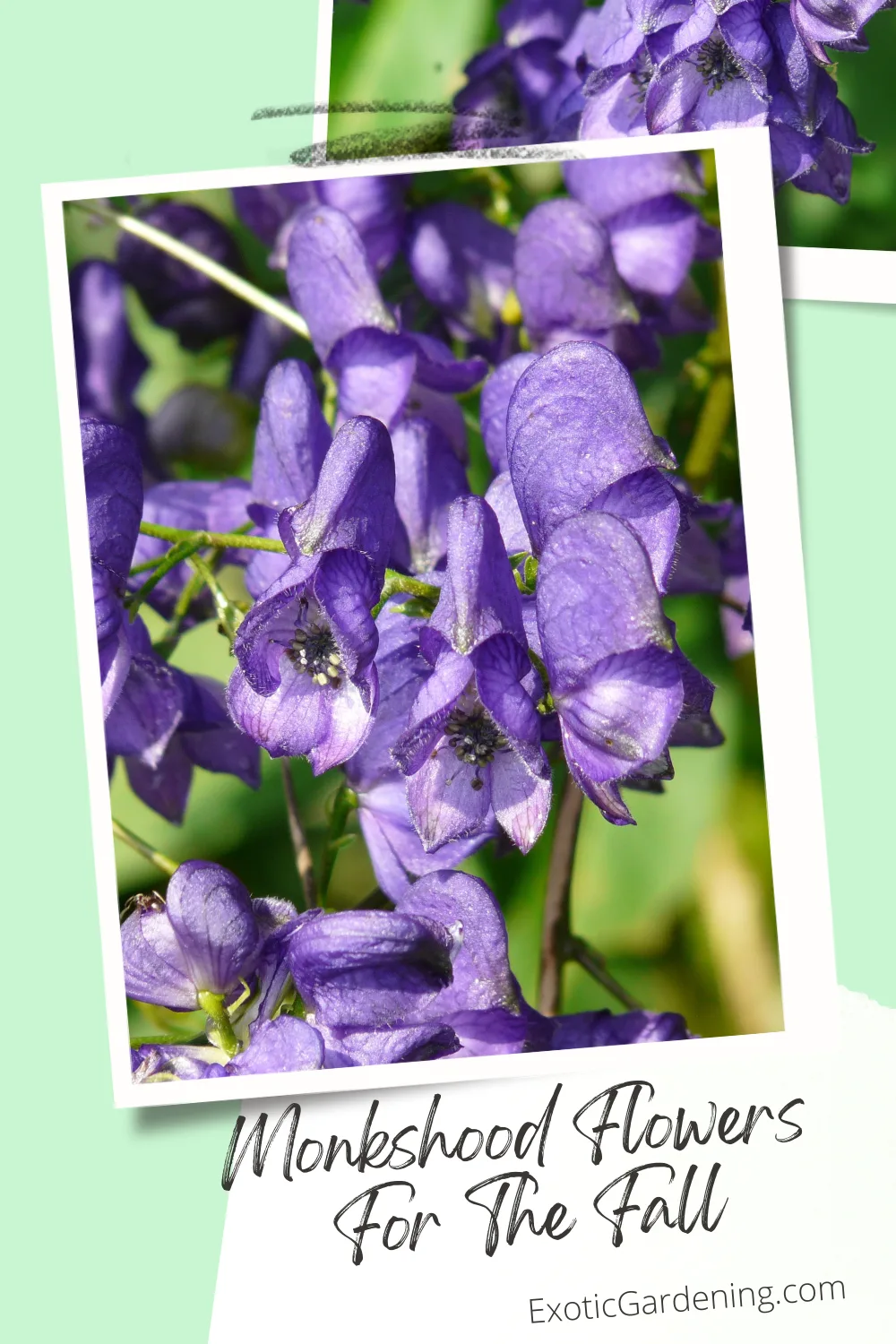
Pests, Diseases, and Companion Plants
While Monkshood is a resilient and captivating addition to your garden, it's essential to be aware of potential pests and diseases that can affect this plant.
Additionally, knowing which companion plants complement Monkshood can help you create a harmonious and visually appealing garden space.
Common Pests and Diseases: Vigilance and Prevention
Monkshood is relatively pest and disease-resistant, but it's not immune to some common garden issues.
Two potential adversaries are aphids and snails.
Aphids may occasionally target your Monkshood, but they can be managed through regular inspections and the application of natural remedies or insecticidal soap.
Keep an eye out for these tiny, sap-sucking insects and address them promptly to prevent damage.
Snails can also pose a threat, as they may nibble on Monkshood leaves.
Employing snail control methods such as traps or natural deterrents can help protect your plants.
Prevention is the best strategy against pests and diseases.
Proper spacing between plants, good air circulation, and maintaining overall garden health can minimize the risk of infestations.
Companion Plants: Enhancing Your Garden Landscape
Monkshood's striking blue flowers and late-season charm make it a fantastic addition to your garden.
To enhance its beauty and create a visually captivating landscape, consider planting companion plants that harmonize with Monkshood.
Hellebore, with its elegant and long-lasting blooms, pairs beautifully with Monkshood.
Both plants thrive in partial shade and share a preference for well-draining soil.
Arum, known for its unique arrow-shaped leaves and intriguing inflorescence, adds a touch of exotic charm to your garden when combined with Monkshood.
They both flourish in shady spots, creating an enchanting corner.
Vinca, with its glossy evergreen foliage and lovely blue or purple flowers, can complement Monkshood's color palette and thrive in similar growing conditions.
By strategically selecting companion plants that thrive alongside Monkshood, you can create a garden landscape that's not only visually appealing but also supports the health and vitality of your late-blooming beauty.
Incorporating these insights into managing pests and diseases while selecting companion plants will help you maintain the health and aesthetics of your Monkshood garden.
With proper care and thoughtful planning, your Monkshood will continue to grace your garden with its unique charm for years to come.
An Autumn Gem Worth the Caution
In conclusion, Monkshood is a captivating addition to any fall garden.
Its deep blue flowers are a testament to the beauty of nature's autumn palette.
However, it's essential to approach this plant with caution, especially if you have visitors in your garden.
Mark it with a toxic sign and educate them about its potential risks.
As we wrap up this exploration of Monkshood in fall gardens, I'd like to encourage you to embrace the unique beauty it brings to the autumn landscape.
While it demands a measure of caution and care due to its toxicity, the rewards are well worth it.
Monkshood's vibrant blue blooms, late-season resilience, and ability to thrive in shade make it a valuable addition to any garden. Whether you're a seasoned gardener or just starting,
Monkshood is a fascinating plant to consider for your fall garden.
So, go ahead, plant a Monkshood, take those necessary precautions, and relish in its autumn splendor.
Monkshood Gardening FAQ: Your Guide to Growing This Enchanting Plant
Q: What is Monkshood, and why should I consider growing it in my garden?
A: Monkshood is a striking perennial plant known for its stunning deep blue flowers. It's an excellent addition to your garden for its unique beauty, late-season blooms, and the enchanting touch it adds to your fall landscape.
Q: When does Monkshood typically bloom in the fall?
A: In many regions, Monkshood blooms in the fall, usually in October. However, it's worth noting that blooming times can vary, and you might see it as early as September or as late as November.
Q: Is Monkshood toxic, and how should I handle it safely?
A: Yes, Monkshood is toxic if ingested or if its sap comes into contact with your skin. Always wear gloves when handling it, and consider planting it away from high-traffic areas in your garden to prevent accidental contact. Educate yourself and others about its toxic nature.
Q: Can I grow Monkshood from seeds, and is it challenging?
A: Growing Monkshood from seeds can be challenging. While it's possible, the young seedlings are delicate, and they often struggle to survive. Some gardeners prefer to start with established plants for more reliable results.
Q: Where should I plant Monkshood in my garden, and what are its preferred growing conditions?
A: Monkshood can thrive in various conditions, but it generally prefers full sun to part shade. However, it can also do well in full shade, as long as it receives sufficient light during the growing season. It's adaptable but benefits from well-draining soil.
Q: How do I care for Monkshood once it's established?
A: Monkshood is relatively low-maintenance once established. Ensure it gets adequate water during its early growth stage, but it becomes drought-tolerant once it's settled. Avoid excessive fertilization; an occasional top dressing of compost and natural leaf decay should be sufficient.
Q: Is Monkshood a resilient plant, and how does it fare after the first frost?
A: Yes, Monkshood is remarkably resilient. Even after the first frost has claimed most other plants, it continues to bloom and add color to your garden. Its late-season charm is one of its standout features.
Q: Can Monkshood be grown in containers, or does it require a garden bed?
A: While Monkshood is often grown in garden beds, it can also be cultivated in containers. Ensure the container has good drainage, and consider providing support for the plant if it becomes top-heavy.
Q: Are there any specific pests or diseases that I should watch out for when growing Monkshood?
A: Monkshood is relatively pest and disease-resistant. However, like many plants, it can be susceptible to aphids and snails. Regularly inspect your plants and take appropriate measures if you notice any issues.
Q: What are some companion plants that go well with Monkshood in the garden?
A: Monkshood pairs beautifully with other shade-loving plants like Hellebore, Arum, and Vinca. These companions complement its elegant and unique presence in your garden.
The Backside Of The Gardening Calendar
Use Frost To Your Advantage
Did you know that there is a way to use frost to your advantage in the garden in both spring and fall? Read on to learn more.
Outsmart Frost in Spring Vegetable Gardens
Understanding how to outsmart frost in spring vegetable gardens leads to earlier harvests, less plant damage and a longer growing season.
When to Plant in Spring: Early Season Garden Tips
Know when to plant in spring by using these early garden season tips. These tips will allow you to get a head start on your vegetable garden.
Jump Start The Spring Garden With Winter Sown Vegetables
Get a jump start on the spring garden with winter sown vegetables. Once you know how to do this, its easy to grow vegetables year round.
Vegetable Garden Frost Protection: Extending Your Winter Gardening Season
Discover essential tips and techniques for vegetable garden frost protection. Extend your winter gardening season with our guide.
Gardening In Cold Climates In Early January
Gardening in cold climates in January without supplemental heat is possible. The seeds, plants and garden structure is what matters.
Vegetables to Plant in January: Garden Tips for Year-Round Growing
There are a number of vegetables to plant in January as well as some flowering plants. Indoors or out, find out dates to start in Indiana.
The Best Vegetables To Plant In February
There are a number of cool season vegetables to plant in February directly in the garden even if you live in a cold climate.
Embracing The Beauty of Winter: A Guide To Winter Flowering Plants
Elevate your garden with winter flowering plants. Explore cold-hardy varieties, garden prep, and nurturing tips.
How To Garden In Winter Indoors And Outdoors
Learn how to garden in winter indoors and outdoors. There are many vegetables and herbs that don't mind the cold or thrive in containers.
Save Money! Harvest Free Vegetables Year-Round In Any Climate!
Yes, you can harvest vegetables year-round, even if you live in a cold climate by planting at the right time and gardening under cover.
September Is Here But Don't Quit Gardening Now!
September is here but there is no need to quit gardening. Plant those cool weather crops from seed or transfer plants into the garden.



